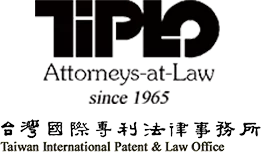Patent-Infringing Assessment Principle Draft Recently Announced.
E041006Y1 Nov. 2004(E60)
The Intellectual Property Office made a press release on September 27 expressing the patent-infringing assessment principle draft (hereinafter referred to as the principle) was completed in the end of September. The principle has been transferred to the Ministry of Justice for subsequent matters.
Criminal punishment has been removed from the current Patent Law. There was not anymore regulation stipulating the Administrative Yuan to appoint professional infringement assessment institutions. And problems of prosecutors entrusting criminal assessment have been resolved too. The current Patent Law stipulates that the Ministry of Justice should appoint professional patent infringement assessment institutions. When the court is processing patent lawsuits, the court may entrust these institutions for assessment. Ever since the practice of the current Patent Law from July 1, the Ministry of Justice has not yet officially appointed any professional assessment institutions.
The principle draft is quite different from the assessment standards announced in 1994. It is divided into I and II volumes. The I volume “Knowing Patent Rights and Infringement” includes four chapters, introducing the definition of patent rights, characteristics, classifications, deadline, effect and limitation. Additionally, it explains the definition, verification, relief, liquidated damages and notices of how to handle the cases. The II volume “Principles of Assessment for Patent Infringement” includes invention (utility model) patents and design patents the two parts, respectively explaining the range of applicability, assessment process, assessment methods and paper writing formats. The amended principles have laid a great emphasis on the history files that need referring to when explaining the range of patent applicability, which means that during application, the patent right holder’s intentions and the inspector’s understanding may be included to interpret patent range. Assessment of design patents, apart from the judgment of uniqueness based on the understanding of the ordinarily skilled persons in the relevant art, “whether goods are similar or identical,” “whether the whole visual design is similar or identical” are included prior to judging the unique characteristics. These two judgments are based on the judgment of ordinary consumers. For example, a chopstick that is identical to the design patent of a baseball bat in appearance will be reckoned as different objects and hence does not fall into the patent right range of the said baseball bat. It is the same case for real cars and toy cars. (2004.10)
CYJ/CHT














